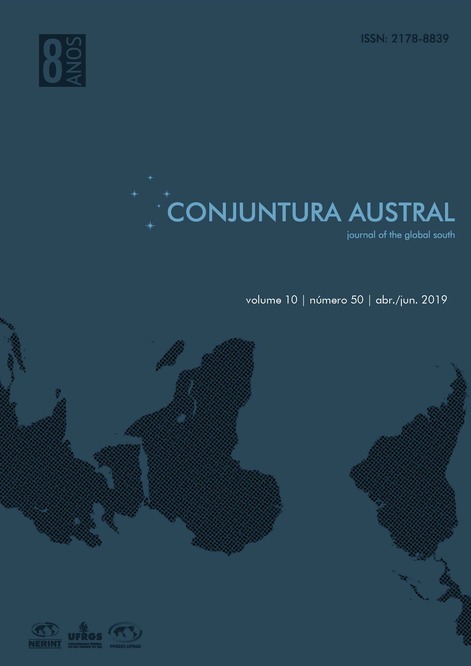An analysis of the Indian military-industrial complex as a tool of strategic autonomy
DOI:
https://doi.org/10.22456/2178-8839.89090Keywords:
Geopolitics, Military-Industrial Complex, IndiaAbstract
Studying what is an Industrial-Military Complex is not a traditional object of Security or International Relations approaches, especially when it comes to an emerging country. However, India is still a developing country, but with ever clearer strategic ambitions. There is a perception of the main agents of the state and of society that the South Asian nation needs to occupy a place of major relevance in the capitalist interstate system. In this way, the field of development and production of armaments and defense devices becomes fundamental for the country to be able to execute its "Great Strategy" with autonomy. Our goal in this article is to analyze the Indian military-industrial complex shedding light on its challenges and ambitions. To do so, we will divide our work into two main parts plus introduction and conclusion. In the first one, we will analyze the Indian geopolitical environment, in the second we will investigate the industrial-military complex of the country considering the public and private sectors.Downloads
Downloads
Published
How to Cite
Issue
Section
License
Authors who publish with this journal agree to the following terms:
a. Authors retain the copyright and grant the journal the right to first publication, with the work simultaneously licensed under the Creative Commons Attribution-Non Commercial-ShareAlike 4.0 International License, which allows its use, distribution and reproduction in any medium, as well as its transformation and creations from it, as long as the original author and source are credited. Also, the material cannot be used for commercial purposes, and if it is transformed, or used as a basis for other creations, these must be distributed under the same license as the original.
b. Authors are able to enter into separate, additional contractual arrangements for the non-exclusive distribution of the journal's published version of the work (e.g., post it to an institutional repository or publish it in a book), with an acknowledgment of its initial publication in this journal.
c. Authors are allowed to deposit, in the repositories accepted by Conjuntura Austral, the preprint version of the manuscripts submitted to the journal prior to and during the submission process, as it can lead to productive exchanges, as well as earlier and greater citation of published work (See The Effect of Open Access)
d. Authors are permitted and encouraged to publish and distribute online (in institutional and /or thematic repositories, on their personal pages, etc.) the postprint version of the manuscripts (accepted and published), without an embargo period.
e. Conjuntura Austral: Journal of the Global South, imbued with the spirit of ensuring the protection of regional academic and scientific production in Open Access, is a signatory to the Mexico Declaration on the use of the Creative Commons BY-NC-SA license to guarantee the protection of academic and scientific production in open access.








